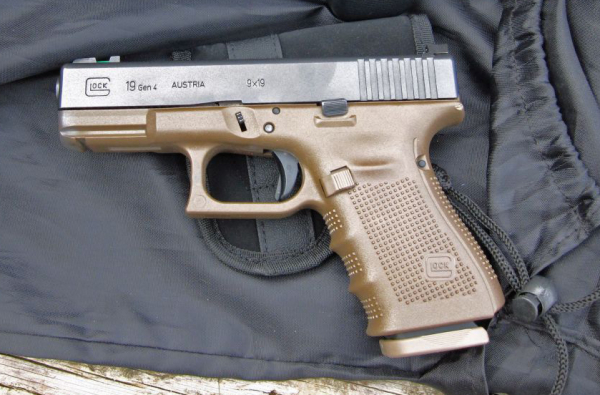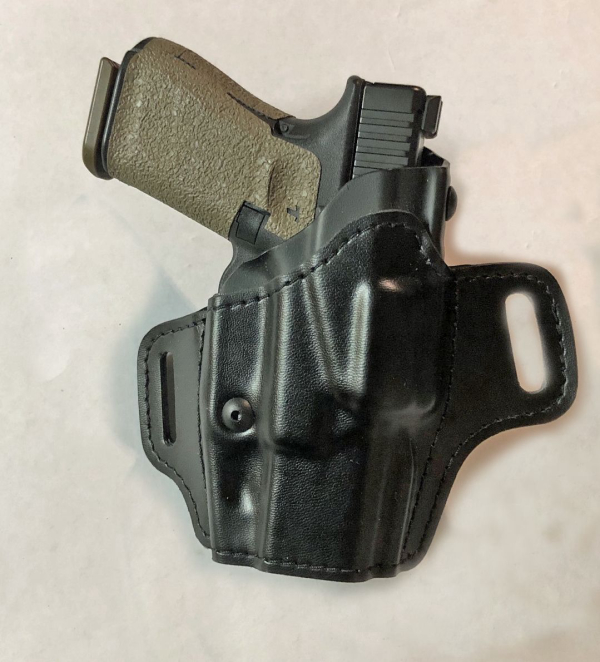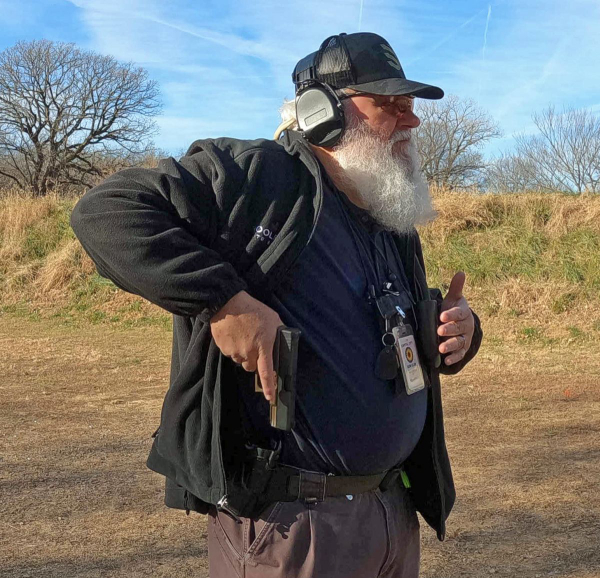Last week, it was my first try at the short-range, peppy cadence qualification from forty-plus years ago with a “Commander- “ sized 1911 in 45 ACP, the Ruger SR1911. If you go back and look, I passed … barely. On that day, I immediately transitioned to a 9mm service compact from a more recent era and combined it with a security-type concealment holster.

The gun was a Gen4 GLOCK 19, shooting Hornady 124gr FTX +P ammo. The gun is from around 2012 and I’d worked it over a bit – adding the Glocktriggers.com duty trigger, the “Guardian.” I also added the Apex Tactical Glock ‘Failure Resistant Extractor,’ a Vickers slide stop, magazine release button and magazine floorplates, and – much later – we installed the Trijicon DI (dual illumination) sights.
The holster is a Safariland 637 ALS Concealment– with the duty-style ALS locking retention system. As the gun is seated in the holster, the gun is locked in place. Attaining a firing grip on the gun and closing your thumb – pressing a lever – releases the lock. The concealment nature of the holster is due to the soft, flexible holster body around the rigid shell. Much like a “pancake” holster made from natural materials, the belt drawing on the slots in either end of the holster make it mold to the user’s body.


I’d shot this course early in the Fall with this gun – and didn’t fare well. Now I was adding a concealment holster – worn concealed – that has a mechanical lock that I had to defeat to get the gun out.
The course was described here last week – and before, here and in the Tactical Wire. It’s not hard to pass, it can be ‘cleaned,’ but it’s hard to hit a perfect score within par time. It gives you something to work toward – and it illustrates where you can stand improvement.
It’s also a handy way to compare guns to guns and holsters to holsters.
I lost seven points on the “high percentage” drill – holster intensive, but you start with your hand on the gun, removing the concealment garment clearance and the lock deactivation aspect from the time equation.
For the pairs from ready – the Florida Dept. of Law Enforcement Qualification, Stage 2 – were all in time, but I contrived to drop a pair of points in scoring.

On the old Bakersfield course, I dropped points on each course between time and paper score. On the reload drill, I was very close to making the par time. Uncharacteristically, I dropped a point on time from the 60 ft. line.
I ended this exercise with 93/100.
At the end, both guns passed; the G19 was “more certain” and a better scorer – for this shooter. Is it a “better gun” in a “better caliber?” That question is unanswered. As it’s the format I most often use, it’s the more familiar in handling. I was surprised I even passed with the 45 caliber SR1911 CMD – and I found the FDLE and High % stages to be remarkably easy to “pass.”
I’d have closer adherence to making par times if I’d stick with a single gun – an idea I’m going to explore later.
We’ll keep you posted.
-- Rich Grassi